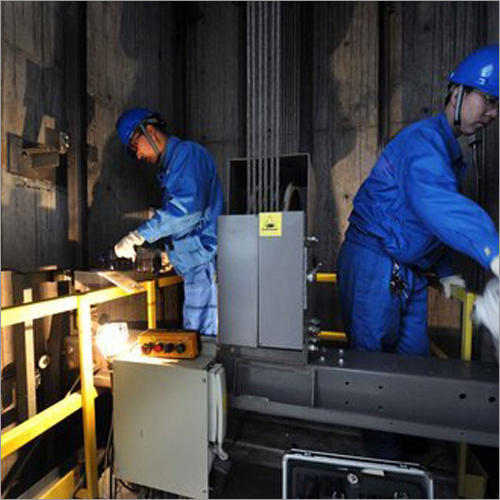Advanced Lift Engineer Course: Prepare for Jobs with Leading Lift Repair Companies Near Me
Advanced Lift Engineer Course: Prepare for Jobs with Leading Lift Repair Companies Near Me
Blog Article
Comprehensive Guide to Elevator Systems and Their Upkeep
Navigating the intricate globe of lift systems and their upkeep is a job that demands precision and knowledge. From the different types of elevator systems in use to the precise adherence to safety guidelines, the upkeep of these upright transport devices is a complex undertaking.
Sorts Of Elevator Systems
Elevator systems can be found in various kinds, each developed to fit details building needs and customer requirements. The most typical kinds consist of hydraulic lifts, traction lifts, machine-room-less lifts, and vacuum cleaner elevators. Hydraulic lifts are excellent for low-rise buildings and make use of a hydraulic piston to move the elevator automobile. Traction lifts, on the various other hand, are a lot more suited for skyscraper buildings and make use of steel ropes and weights to move the car. Machine-room-less lifts are a space-saving choice as they do not need a separate machine space for the elevator equipment. Vacuum lifts, a much more modern technology, usage air pressure differentials to relocate the vehicle within a clear tube.
Each sort of elevator system has its very own advantages and negative aspects, making it vital for building owners and programmers to meticulously consider their certain demands before selecting the most appropriate choice. Elements such as developing height, area accessibility, energy performance, and spending plan constraints all play a substantial role in figuring out the very best elevator system for a particular structure.
Typical Upkeep Concerns
Normal upkeep of elevator systems is vital to ensure smooth operation and prolong their life-span. Despite routine maintenance, elevator systems can still run into common upkeep issues that need to be without delay addressed to stop disruptions in solution. Among the most constant issues is door malfunctions. Lift doors might obtain misaligned, bring about issues with opening and closing correctly. This can create hold-ups and security dangers, requiring immediate interest from upkeep technicians. One more typical trouble is associated with the elevator's leveling accuracy. If the lift does not align properly with the floorings, guests might experience tripping risks and discomfort. Additionally, concerns with the control system, such as sensor issues or electric issues, can create the lift to breakdown or quit working altogether. Normal inspections and positive upkeep can help identify and fix these typical upkeep problems before they intensify and affect the overall performance of the elevator system.
Safety Rules and Conformity
Abiding by stringent safety and security guidelines and making sure compliance with market requirements are critical for maintaining the functional integrity of lift systems. Elevators are subject to a thorough set of safety and security guidelines to guard guests, upkeep employees, and the general public. Regulatory bodies such as the go to my blog Occupational Security and Health Management (OSHA) in the United States and the European Lift Organization (ELA) in Europe establish standards that cover numerous elements of lift style, upkeep, operation, and installment.
Conformity with these regulations is not only a legal demand however likewise an ethical responsibility for structure proprietors and lift upkeep business. Routine examinations, upkeep checks, and adherence to safety and security methods detailed in the laws are crucial to guarantee the risk-free and reliable operation of elevator systems.
Ideal Practices for Maintenance

Structure proprietors must also take into consideration investing in innovation upgrades to enhance the effectiveness and safety of their lift systems. By following these ideal practices, lift systems can run smoothly and securely, providing trustworthy vertical transport for owners.

Advanced Technologies for Effectiveness
Applying sophisticated innovations in elevator systems can considerably enhance operational effectiveness and passenger experience. These systems allow guests to input their preferred floor before going into the elevator, which then routes them to the most reliable vehicle.
Moreover, the assimilation of clever sensing units and predictive maintenance capacities has actually revolutionized elevator maintenance. These sensing units can discover potential concerns before they intensify, making it possible for proactive maintenance interventions and reducing downtime. In addition, using regenerative drives and energy-efficient parts helps in reducing power consumption and operating prices in lift systems.
In addition, the execution of cloud-based monitoring and remote diagnostics enables real-time monitoring of elevator efficiency and instant troubleshooting of any kind of malfunctions. This aggressive approach not only enhances system integrity but also improves the general user experience find out here now by making sure smooth and nonstop lift operations.
Final Thought
To conclude, understanding the different kinds of elevator systems, typical upkeep issues, security laws, best upkeep practices, and progressed technologies for performance is vital for ensuring the smooth operation of elevators. By sticking to safety laws and carrying out finest methods for maintenance, building proprietors can extend the lifespan of their lift systems and guarantee the safety of passengers. It is necessary to stay updated on the most recent innovations in lift technology to improve effectiveness and integrity.
The most common types include hydraulic lifts, grip elevators, machine-room-less lifts, and vacuum cleaner elevators. Hydraulic lifts are suitable for low-rise buildings and make use of a hydraulic piston to relocate the lift car. Machine-room-less lifts are a space-saving choice as they do not require a separate machine room for the lift machinery. Regular evaluations and aggressive upkeep can assist determine and deal with these usual maintenance problems before they escalate and affect the overall performance of the elevator system.

Report this page